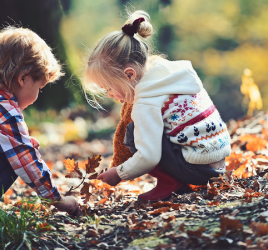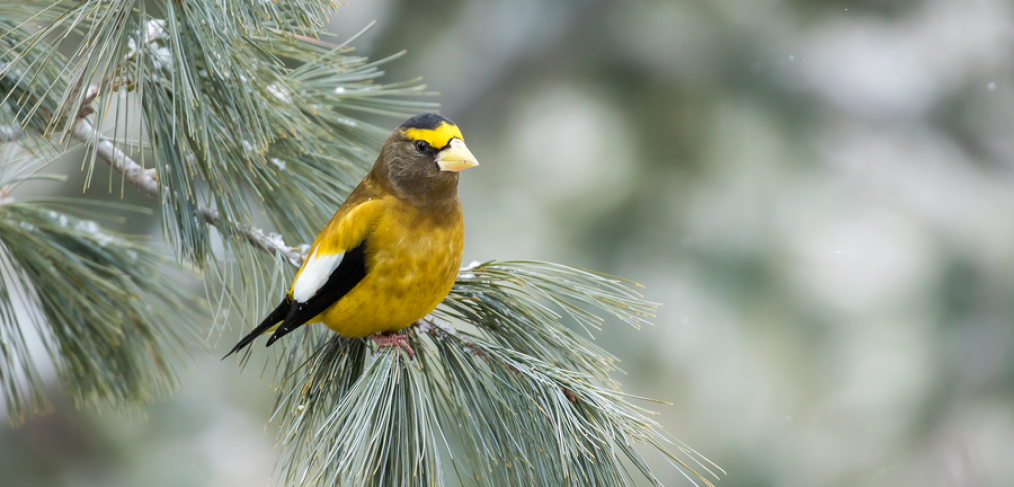
Winter Birding: Birds You Can Only See In Winter
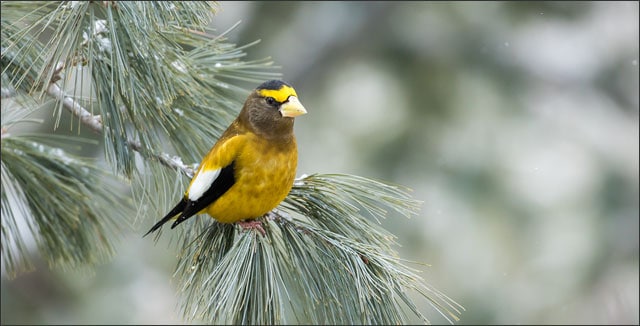
Are you a fan of the Winter Olympics? It’s one of my favorite indoor pastimes in winter, even though it does only come around every four years.
One benefit of watching the Olympics is that it tends to remind you that people do have the ability to enjoy themselves outdoors in winter.
Let’s face it. Gardeners don’t always make the best winter lovers. However, here is a challenge. How can we get outside and enjoy the season despite the cold? Skiers do it. Hunters do it.
Gardeners can do it too! One pastime enjoyed by many gardeners in warm months is still available to you through the winter! Birding.
Getting Started in Winter Birding
Snow Birds of North America
No, I do not mean those who travel to Florida for the winter, like my grandparents did. There are actual, honest-to-goodness, birds who, while native to Canada or the Arctic, “irrupt” into North America only during the winter months as they look for food. As in, this is the only time you will see one.
You are much more likely to see them now, too, because of how few species are around in winter. But trust me. Just step outside your door and listen. Chances are good that you will hear at least a little bit of birdsong.
Red & White-winged Crossbills
Red & white-winged crossbills are beauties that have twisted bills which they use to dig seeds out of pine cones. The males are bright scarlet and females are olive green – very unusual. The only difference between them is that white-winged crossbills have white dappling on their wings. The species as a whole has 10 distinct call-types.
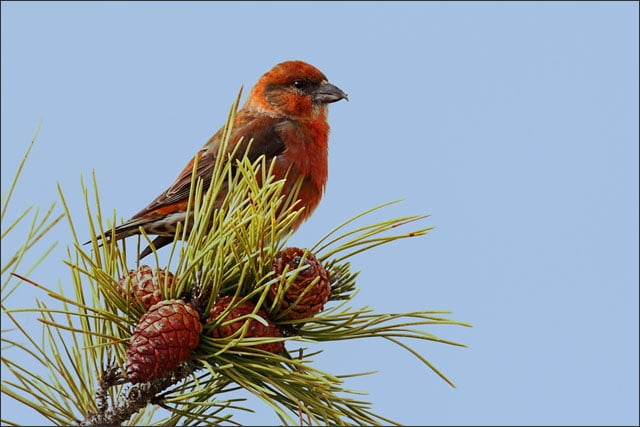
Red crossbill
Northern Goshawk
The northern goshawk is a raptor hunter. It hunts rabbits, squirrels, hares and other birds. Here’s the amazing part. They hunt in dense forests, flying through the trees at high speeds. The adults have heavily barred chests, a steel grey back and wings, and red eyes.
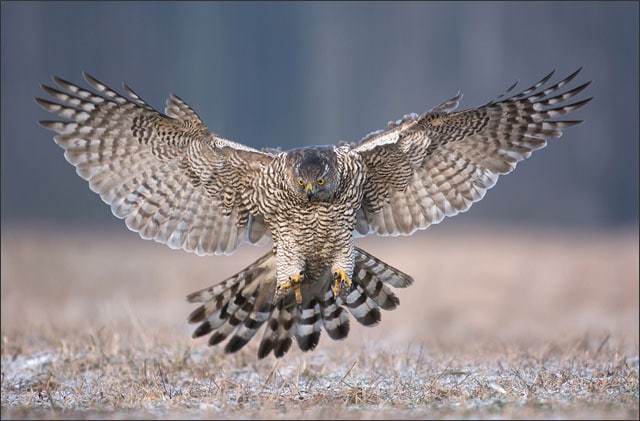
Northern goshawk
Snowy Owl
In the winter of 2013/14, thousands of this majestic bird irrupted into the United States – even as far south as Florida and the Bahamas. They do this every 3-5 years, but not quite in such numbers or so far south. If you live in the northern part of the country, chances are good you could see one.

Snowy owl in flight
Evening Grosbeak
Evening grosbeaks are bright yellow finches that can even be found crowding around winter bird feeders. They are residents of northern conifer forests but come looking for food. The males are the yellow ones. The females have a green beak.
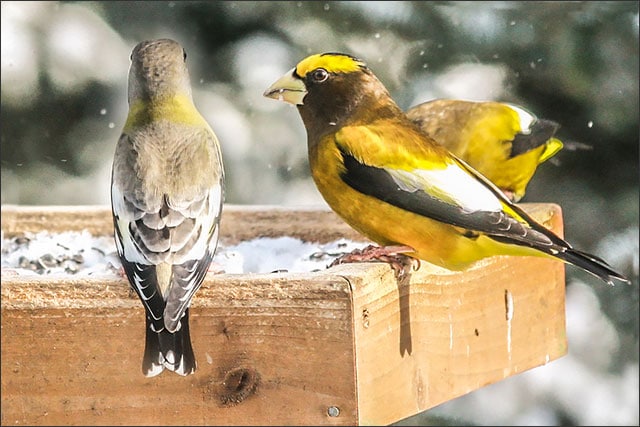
Female and male evening grosbeaks
Hoary & Common Redpolls
These cute little birds are arctic natives but like to irrupt to North American bird feeders for the winter. They have more feathers than other birds and will even pluck them out if the weather gets too warm. Look for a bright red spot on the top of their heads.
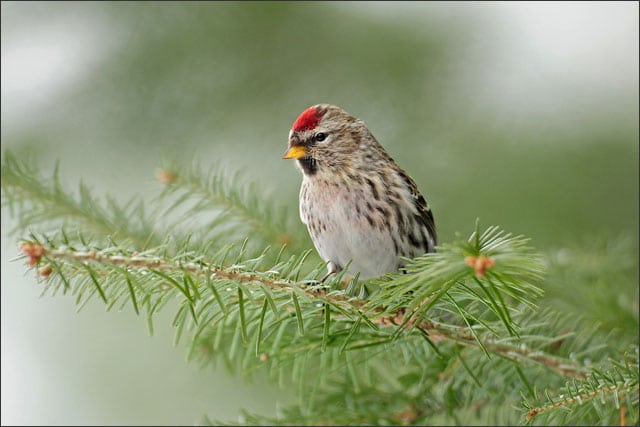
Common redpoll
Pro Tips for Winter Birding and Hiking
- Layering is essential. Once you are warm from movement, you don’t want to sweat too much.
- Avoiding cotton is very important. It will absorb your sweat and keep it next to your skin, chilling you from the inside out.
- Pay attention to your feet and hands. Invest in a good pair of socks, waterproof hiking boots, and warm gloves or mittens. Mittens will keep your hands warmer. It doesn’t hurt to bring an extra pair of gloves and boot liners with you either.
- Bringing a thermos of hot tea can help you keep warm from the inside out. As can moving.
Bird Feeding
If you can’t go outside much this winter – let’s face it, full-time work hours don’t leave much time for winter sports. You can start your own bird feeder tomorrow and reap the benefits for years to come.
It doesn’t take a huge chunk of change or a big yard. Put them in the right spot and keep them stocked for maximum returns.
As mentioned above, several irrupter species like to come to bird feeders. However, there are North American natives you may see as well:
- Finches
- Sparrows
- Titmice
- Jays
- Woodpeckers
- Chickadees
- Cardinals
Southern bird feeders may even look forward to hummingbirds and warblers overwintering – if your area is warm enough. Winter is difficult for wild animals. If you have a feeder that is “known” around the neighborhood to be well-stocked, who knows what kind of visitors you may get?
Best Feeder Practices
Covered feeders are best – especially if they have covers over the perching and dispensing areas so the snow won’t cover the seed. Covering also protects birds from storms, which can keep them hanging around for a longer period of time.
Place winter bird feeders in sheltered locations – not right in the middle of your yard – to protect from high winds. Close to the house will do it. It is best if you can also put it near a hedge or tree so birds can fly to safety from predators.
Just make sure you put your feeder no more than 5 feet away from a window or wall to minimize collisions and use decals that will help the birds distinguish a window.
Big bird feeders will attract more birds, and will not need re-filling so often. Make sure the seed doesn’t get wet, though. Mold and fungus can grow in the seed if this happens. In addition, make sure you clean it regularly to prevent disease in your backyard bird flock.
Check out which species are likely to visit your house before you decide which seed mix to put out. High-fat content is best for wintering birds.
- Hulled peanuts or peanut hearts
- Peanut butter
- White millet seed
- Sunflower seed – black oil
- Thistle seed
- Suet mixed with seeds or fruit
Conclusion
In conclusion, the best thing you can do for yourself for the rest of the winter is to get outside, get some fresh air, and spend time with nature. One of the very best ways you can do that is by watching some amazing birds you won’t get to see any other time.

